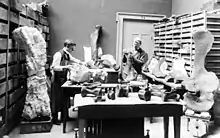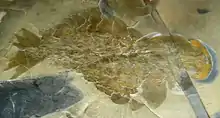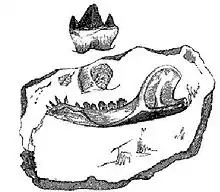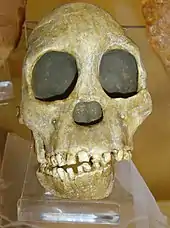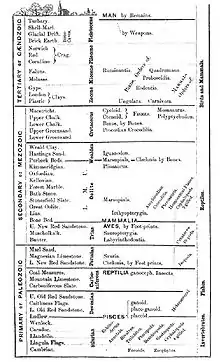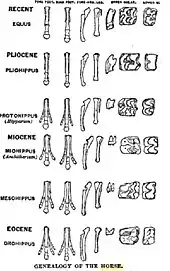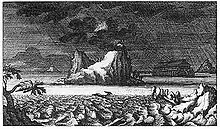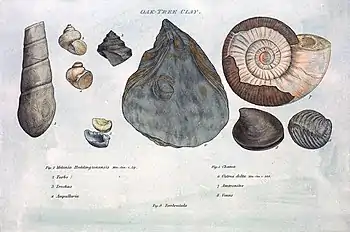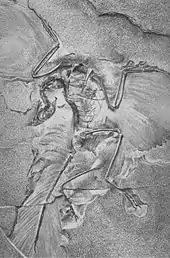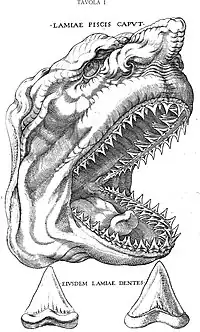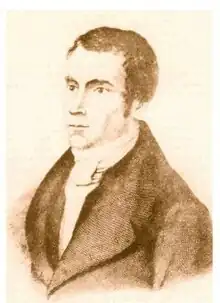|
The Palaeontology Portal
Introduction A paleontologist at work at John Day Fossil Beds National Monument Paleontology (/ˌpeɪliɒnˈtɒlədʒi, ˌpæli-, -ən-/), also spelled palaeontology or palæontology, is the scientific study of life that existed prior to, and sometimes including, the start of the Holocene epoch (roughly 11,700 years before present). It includes the study of fossils to classify organisms and study their interactions with each other and their environments (their paleoecology). Paleontological observations have been documented as far back as the 5th century BC. The science became established in the 18th century as a result of Georges Cuvier's work on comparative anatomy, and developed rapidly in the 19th century. The term has been used since 1822 formed from Greek παλαιός ('palaios', "old, ancient"), ὄν ('on', (gen. 'ontos'), "being, creature"), and λόγος ('logos', "speech, thought, study"). Paleontology lies on the border between biology and geology, but it differs from archaeology in that it excludes the study of anatomically modern humans. It now uses techniques drawn from a wide range of sciences, including biochemistry, mathematics, and engineering. Use of all these techniques has enabled paleontologists to discover much of the evolutionary history of life, almost all the way back to when Earth became capable of supporting life, nearly 4 billion years ago. As knowledge has increased, paleontology has developed specialised sub-divisions, some of which focus on different types of fossil organisms while others study ecology and environmental history, such as ancient climates. (Full article...) Selected article on the prehistoric world and its legacies Artist's depiction of Allosaurus. Allosaurus was a large bipedal predator with a large skull, equipped with dozens of large, sharp teeth. It averaged 8.5 meters (30 ft) in length, though fragmentary remains suggest it could have reached over 12 meters (39 ft). Relative to the large and powerful hindlimbs, its three-fingered forelimbs were small, and the body was balanced by a long, heavy tail. It is classified as an allosaurid, a type of carnosaurian theropod dinosaur. The genus has a complicated taxonomy, and includes an uncertain number of valid species, the best known of which is A. fragilis. The bulk of Allosaurus remains have come from North America's Morrison Formation, with material also from Portugal and possibly Tanzania. It was known for over half of the 20th century as Antrodemus, but study of the copious remains from the Cleveland-Lloyd Dinosaur Quarry brought the name Allosaurus back to prominence, and established it as one of the best-known dinosaurs. As the prominent large predator in the Morrison Formation, Allosaurus was at the top of the food chain, probably preying on contemporaneous large herbivorous dinosaurs. Potential prey included ornithopods, stegosaurids, and sauropods. While it is often thought of as preying on sauropod dinosaurs in groups, there is little evidence for cooperative social behavior in this genus, and individuals may have been aggressive toward each other instead. It may have attacked large prey by ambush, using its upper jaws like a hatchet. (see more...) Did you know?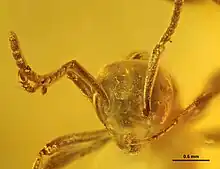 An Asymphylomyrmex balticus preserved in amber
 A life restoration of Styxosaurus
General images -The following are images from various paleontology-related articles on Wikipedia.
Selected article on paleontology in human science, culture and economics Illustration of trilobite fossils by Joachim Barrande. The first half of the 19th century saw paleontological activity become increasingly well organized. This contributed to a rapid increase in knowledge about the history of life on Earth, and progress towards definition of the geologic time scale. As knowledge of life's history continued to improve, it became increasingly obvious that there had been some kind of successive order to the development of life. After Charles Darwin published Origin of Species in 1859, much of the focus of paleontology shifted to understanding evolutionary paths. The last half of the 19th century saw a tremendous expansion in paleontological activity, especially in North America. The trend continued in the 20th century with additional regions of the Earth being opened to systematic fossil collection, as demonstrated by a series of important discoveries in China near the end of the 20th century. There was also a renewed interest in the Cambrian explosion that saw the development of the body plans of most animal phyla. (see more...) On this day...January 12:
Selected image
CategoriesCategory puzzle Select [►] to view subcategories
Paleontology Paleontology by country Subfields of paleontology Paleontology awards Paleontology in the Caribbean Paleontological concepts and hypotheses Economic paleontology Evolution of the biosphere Fossil record History of paleontology Paleontological institutions and organizations Prehistoric life Paleontology lists Paleontology mass media Paleontological sites Paleontologists Paleontology by year Paleontology stubs TopicsGeneral - Paleontology - Fossil - Evolution - Extinction Quality ContentFeatured paleontology articles
- Achelousaurus
- Acrocanthosaurus
- Albertosaurus
- Allosaurus
- Amargasaurus
- Ankylosaurus
- Apatosaurus
- Archaeopteryx
- Baryonyx
- Carnotaurus
- Catopsbaatar
- Ceratosaurus
- Chicxulub Crater
- Compsognathus
- Cretaceous–Tertiary extinction event
- Daspletosaurus
- Deinocheirus
- Deinonychus
- Deinosuchus
- Dilophosaurus
- Dinosaur
- Diplodocus
- Dromaeosauroides
- Edmontosaurus
- Elasmosaurus
- Giganotosaurus
- Gorgosaurus
- Herrerasaurus
- Iguanodon
- Istiodactylus
- Lambeosaurus
- List of dinosaur genera
- Majungasaurus
- Massospondylus
- Megalodon
- Nemegtomaia
- Nigersaurus
- Opisthocoelicaudia
- Paranthodon
- Parasaurolophus
- Plateosaurus
- Psittacosaurus
- Seorsumuscardinus
- Spinosaurus
- Stegosaurus
- Stegoceras
- Styracosaurus
- Tarbosaurus
- Thescelosaurus
- Triceratops
- Tyrannosaurus
- Velociraptor
Things you can do
Current Paleontology FACs - None yet... WikiProjects
Related portalsAssociated WikimediaThe following Wikimedia Foundation sister projects provide more on this subject:
Discover Wikipedia using portals
|
